
The Estate
A hotspot for the history of Burgundy, Moulin aux Moines is located in the heart of the Côte de Beaune, in the village of Auxey-Duresses. This mythical “clos” has been farmed and harvested since its plantation by the monks of the Abbey of Cluny, and then by those of the Abbey of Citeaux since 962, continuing for 6 centuries until present day. This unique area was chosen by the monks because of the environment’s qualities/features: a noble abode in the intersection of two valleys at the heart of the Cote de Beaune wine region, walled in by the Clos and penetrated by the Clous River which nourished the mill.
The year 2008 marked the revival of the domaine with the arrival of a new team. The idea was to restore the ancient values of its legendary wines, in the spirit of organic and biodynamic philosophy.
In 2009, after several years at domaine de Montille, Willy Roulendes joined Moulin aux Moines to manage the vineyards and the cellar, bringing his personal touch to produce vibrant terroir wines. With his arrival began the first year of conversion to organic certification. The winery has been certified Ecocert since 2012 and certified Demeter since 2021. The wines are also 100% vegan although not certified.
The domaine increased in size bit by bit over the years and now spans 15 hectares, extending from Pernand-Vergelesses to Corpeau, a village in the south of Puligny-Montrachet.
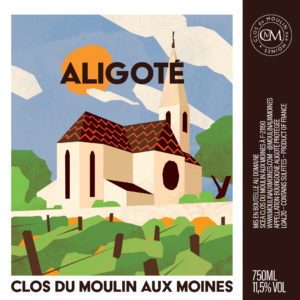
Aligoté
Location: The Aligoté is produced from 2 vineyards grown organically: Les Fas in Pommard (older vines planted at an altitude of 330m) and Clos de la Perrière in Corpeau (located south of Puligny-Montrachet, first planting in the late 1960’s. The grapes have a higher level of acidity here).
Soil: Limestone
Grape Variety: 100% Aligoté
Harvest: Manual
Vinification: The grapes are pressed slowly and then the juice is transferred to stainless steel tanks for gentle settling. Fermentation at a controlled temperature of 20-22°C with the use of indigenous yeasts. No sulfur added.
Aging: Steel tanks and a small portion in wooden barrels for 10 months.
Alcohol: 11.5%
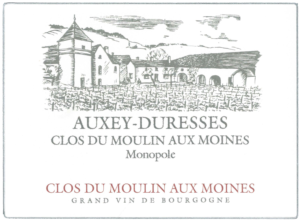
Auxey-Duresses Blanc Moulin aux Moines
Location: The Auxey-Duresses “Moulin aux Moines” vineyard is one of the Domaine’s four monopoles (vineyards exclusively owned by the Domaine). It is situated on the border of Meursault, and thus it shares a similar terroir.
Surface Area: 0.80 ha
First Planting: Early 2000s
Soil: Marl-limestone
Altitude: 298 meters above sea level
Grape Variety: Chardonnay
Exposure: North /northeast
Plant Density: 10,000 vines/ha
Harvest: By hand, towards September
Yield: 30 – 35 hl/ha
Aging: 12-15 months in oak barrels (0-5% new wood)
Bottles Produced: 1,800
Alcohol Content: 12.5%
Cellaring: 4-6 years
Tasting Notes: This wine possesses a superior aromatic complexity and is very expressive. The mouth has ripe fruits aromas, with nuts and fresh almond, complemented by notes of cloves, pepper, dry galangal (strong Malaysian herbal plant), vanilla, balsamic, sweet citrus fruits, mandarin, and gentian. This is a dense wine – harmonious and especially elegant.

Auxey-Duresses Rouge Moulin aux Moines Vieilles Vignes
Location: The Auxey-Duresses “Moulin aux Moines” vineyard is one of the Domaine’s 3 monopoles (vineyard exclusively owned by the Domaine. The “vielles vignes” section of the monopole was planted in the 1950’s in the upper part of the clos where the terroir is of a different composition, on a steeper canter, dryer and not to mention closer to the bedrock, supplying the wine with a deeper aromatic complexity pivotal to its character.
Surface Area: 0.90 ha
First Planting: 1950
Soil: Marl-limestone
Altitude: 298 meters above sea level
Grape Variety: Pinot Noir
Exposure: Northeast
Plant Density: 10,000 vines/ha
Harvest: By hand, towards September
Yield: 38 – 44 hl/ha
Aging: 16 – 18 months in barrel, no new wood
Bottles Produced: 4,000
Alcohol Content: 12.5- 13.5%
Cellaring: 10 years
Tasting Notes: The aromatic profile is very complex and extensive. The mouth is full of notes of ripe black fruit, cherry juice, and eau de vie. Also to be found are notes of roasted meats and almond that shape the frame of the tannic structure, providing more roundness and finesse than wines from the neighboring vineyard.

Monthélie Sous Le Cellier Blanc
Appellation: Monthélie
Location: this wine is produced from a plot located north of the Monthélie appellation. The slope is significant (330 meters above sea level), with an exposure to the west. The climate “Sous le Cellier” takes its name from its proximity to the cellar of the houses, since it is located at the exit of the village.
Size of Plot: 0.69 hectares
Grape Variety: 100% Chardonnay
Vines: Planted between 2003 and 2015
Plant Density: Around 10,000 vines/ha
Yields: Controlled at 42-48 hl/ha
Soil: Sandy / silty / limestone
Viticulture: Certified organic and biodynamic.
Harvest: Manually done with a rigorous sorting of the grapes.
Vinification: The direct pressing is long and progressive, so the musts oxidize slowly and naturally. Fermentation starts in 350 liter oak barrels, with the use of indigenous yeasts.
Aging: 10 months, no fining or filtration.
Tasting Notes: A delicious white with floral notes, with a nice roundness and a discreet woodiness!
Alcohol: 13%
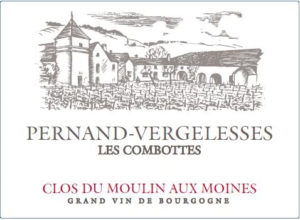
Pernand-Vergelesses Blanc Les Combottes
Appellation: Bourgogne Pernand-Vergelesses
Plot: The plot, whose vines are around 40 years old, is located on a hillside extending that of Corton Charlemagne.
Soil: White marl on clay-limestone soil
Grape Variety: 100% Chardonnay
Harvest: Manually done in September
Yield: 40 hl/ha
Viticulture: Certified organic and biodynamic
Vinification: The fermentation is long and gentle in steel tank.
Aging: In oak barrels for 12-18 months (15% new wood)
Alcohol: 13%
Cellaring: 4-7 years
Tasting Notes: This wine is mineral, fragrant, dry and balanced. With age, it develops notes of flinty stone and toasted almonds. it is the perfect accompaniment to seafood (especially shelfish).
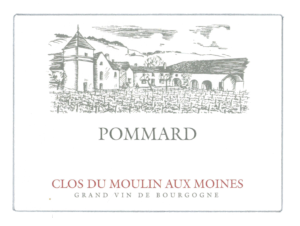
Pommard
Location: The Pommard Village is a blend of fruit from very compatible vineyards. The smallest plot is on “Croix Planet” vineyard, which produces fat and full wines. The plots of “Vaumuriens” and “Vignots” are old vines that give delicacy and structure to the final blend. The plot “La Vache”, which is a “climat” located on the hill-centre of the terroir, assures a rather mineral wine.
Surface Area: 1 ha
First Planting: 1947, 1983, 1988, 1999
Soil: Clay-limestone
Altitude: 270, 330, 353, 362 meters above sea level
Grape Variety: Pinot Noir
Exposure: East, north
Plant Density: 10,000 vines/ha
Harvest: By hand, towards September
Yield: 36 – 40 hl/ha
Aging: 12-15 months in oak barrels (5% new wood)
Bottles Produced: 4,150
Alcohol Content: 12.5%
Cellaring: 5-10 years
Tasting Notes: What stands out in the Pommard Village is it’s tannic structure with a particular rustic character typical of the terroir, whilst holding its elegance firmly intact with the touch of its silky interior. It sports a very pleasing acidity with juicy cherry and cocoa aromas, and will be serenity in a bottle after 2-3 years nesting in the cellar.
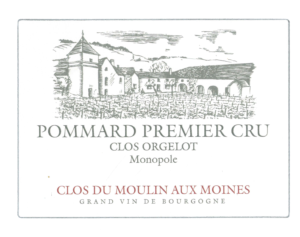
Pommard 1er Cru Clos Orgelot Monopole
Location: One of the Domaine’s emblematic cuvees; this wine is one of the monopoles (only producer of this wine). This plot of Pommard 1er Cru, slightly larger than 1 hectare, is said to be “among the most renowned areas of Pommard” (“The Bible”, Dr. Denis Morelot, 1831). This famous vineyard has an exceptional situation, located just above Pommard Epenots, between Les Pézerolles and Beaune 1er Cru “Clos des Mouches”. These old vines produce a very fine, structured, and elegant wine.
Surface Area: 1.1 ha
First Planting: 1921,1990,1993
Soil: Clay-limestone
Altitude: 310 meters above sea level
Grape Variety: Pinot Noir
Exposure: East
Plant Density: 10,000 vines/ha
Harvest: By hand, towards September
Yield: 25 – 30 hl/ha
Aging: 18-22 months in oak barrels (10-15% new wood)
Bottles Produced: 1,600
Alcohol Content: 13.5%
Cellaring: 10 years +
Tasting Notes: The “Clos Orgelot” vineyard develops aromas of ripened berries, acacia catechu, and exotic sandalwood. It has a rich structure that is curvaceous and velvety, and finishes with an enduring strength.
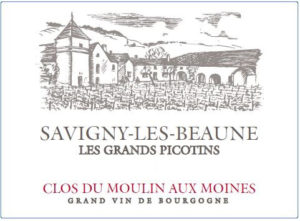
Savigny-les-Beaune Les Grands Picotins
Appellation: Savigny-les-Beaune
Soil: Clay limestone
Yield: 34-38 hl/ha
Grape Variety: 100% Pinot Noir
Viticulture: Certified organic and biodynamic
Harvest: Manually done in September; sorting on the vine as well as in the cellar.
Vinification: Depending on the temperature of the grapes, the musts can be lowered to 14 degrees Celsius in order to delay the start of fermentation and prolong the time of maceration. In order to bring out the elegance of the Pinot Noir, the pigeage is light and manually done. The focus is primarily placed on the daily pumping over. Vinification lasts between 15-25 days depending on the vintage.
Aging: The wine is aged in oak barrels (10-20% new wood) for 20-22 months. Bottling on the estate in the spring.
Cellaring: 2 to 5+ years
Tasting Notes: This wine displays a bouquet of ripe red fruit. On the palate, it is vibrant and pure.
Alcohol: 13.5%
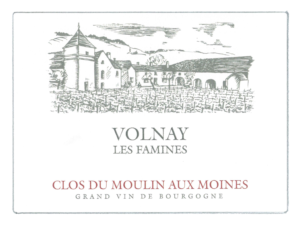
Volnay Les Famines
Soil: Clay-limestone
Yield: 34-38 hl/ha
Harvest: Manually done in September. Sorting in the vineyard as well as in the cellar. Grape harvest 70 to 90% depending on the vintage.
Vinification: Depending on the temperature of the grapes, the must can be lowered to 14°C in order to delay the start of fermentation and lengthen the maceration time. In order to work on the elegance of Pinot Noir, the punching down is light and manual. The main emphasis is on daily pumping over.
The vinification takes place over a long period, between 15 and 25 days depending on the vintage. Naturally, the musts rise in temperature in order to fix the color and the aromas. Once pressed, the wine is transferred, as much as possible by gravity, to old barrels and is not racked for the 12 months of aging. Bottling takes place in the spring.
Aging: In oak barrels for 20 to 22 months (10-20% new wood)
Alcohol Content: 13.5%
Acidity: 5.4 g/l
Cellaring: 5-10 years
Tasting Notes: An exceptional nose that reveals aromatic notes of wild red fruits. On the palate, it is an explosion of ripe black fruits. Delightful, lingering finish.


